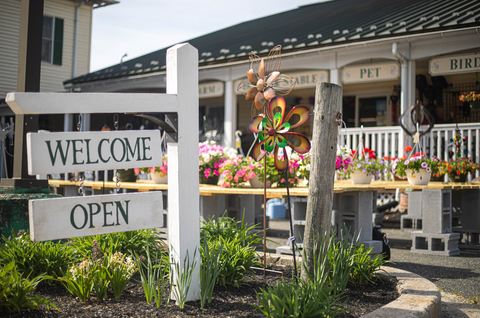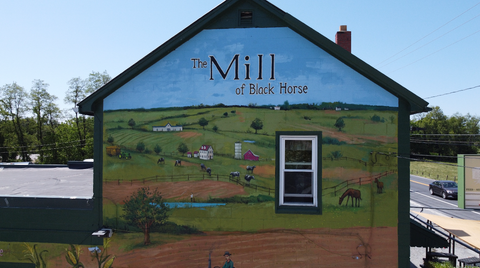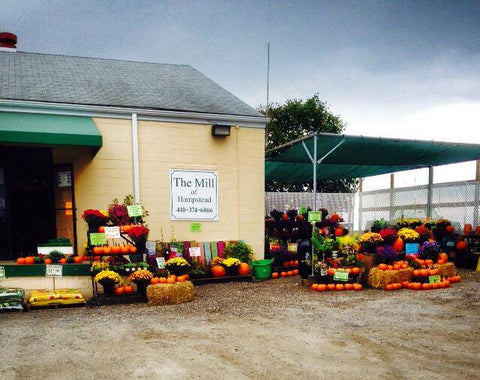Mulching your gardens and landscape plants serves three key purposes:
- Suppresses weed growth by blocking sunlight from reaching weed seeds.
- Helps retain soil moisture around your plants.
- Adds nutrients back to the soil as it decomposes, improving soil structure and tilth.
When applied correctly, mulch also helps regulate soil temperatures, keeping root systems cooler during the summer months and more stable year-round.

Choosing the Right Mulch
Using the appropriate type of mulch can keep your gardens healthy, encourage rich, loamy soil, and ensure water penetrates effectively. However, proper application is just as important as the type of mulch you use.
See The Mill's Mulch Guide for our selection of mulch
Mulching Guidelines
- Start mulching 3–4 inches away from the base or trunk of plants. Allowing mulch to touch the plant can trap excess moisture and lead to disease.
- Some plants, like irises and daylilies, have surface-level roots and require little to no mulch.
- Shallow-rooted shrubs like azaleas, boxwoods, rhododendrons, and pieris should receive no more than ½ inch of mulch near the base to ensure proper air circulation.
- Beyond the plant’s dripline, you can increase mulch depth to about one inch for decorative or moisture retention purposes.
Know Where Your Mulch Comes From

Not all mulch is created equal. Be cautious with free or low-cost mulch sources:
- Uncomposted mulch (such as fresh wood chips or green mulch from prunings) can harbor diseases, poison ivy, or harmful chemicals.
- Fresh mulch that hasn’t composted properly may rob nitrogen from the soil as it begins to break down. This can stress new plantings, causing yellowing and poor growth.
- Low-quality dyed mulches are often made from recycled pallets or treated lumber, which may introduce toxins or contaminants into your soil.
Avoid Over-Mulching
Applying too much mulch can do more harm than good. Over-mulching can smother roots, reduce airflow, and encourage shallow root development:
- "Mulch volcanoes"—where mulch is mounded against tree trunks—can cause root suffocation, disease, and eventual plant decline.
- Roots that emerge through thick mulch in search of air dry out quickly and become more vulnerable to damage.
Signs of over-mulching include:

- Sparse canopies
- Dying limbs
- Poor leaf retention
- Roots growing above the soil line
A healthy tree should not look like a pencil sticking straight out of a pile of mulch. You should clearly see the root flare at the base of the trunk.
How Much Mulch to Use
- For fine mulch, apply 1–2 inches, using the thinner layer near the base of plants and increasing toward the dripline.
- For coarse mulch, you can apply up to 2 inches, which allows for better water penetration and airflow.
- Always keep mulch 3–4 inches away from plant stems or tree trunks to prevent rot and disease.
Best Mulch Materials
For long-term soil health, the best mulches are those made from trees, leaves, or locally harvested plant matter that has been properly composted. These materials:
- Improve soil vitality over time
- Provide slow-release nutrients
- Resist matting, allowing for water and airflow
- Can be refreshed annually by top-dressing, rather than removing and replacing entirely
The Mill has various types of bagged and bulk mulch, soil conditioners and soils with local delivery for both available. Need help selecting the best choice for your needs? Stop into a Mill location or check our collection of mulch HERE. Our team is ready to help you find the best mulch for your garden!

























